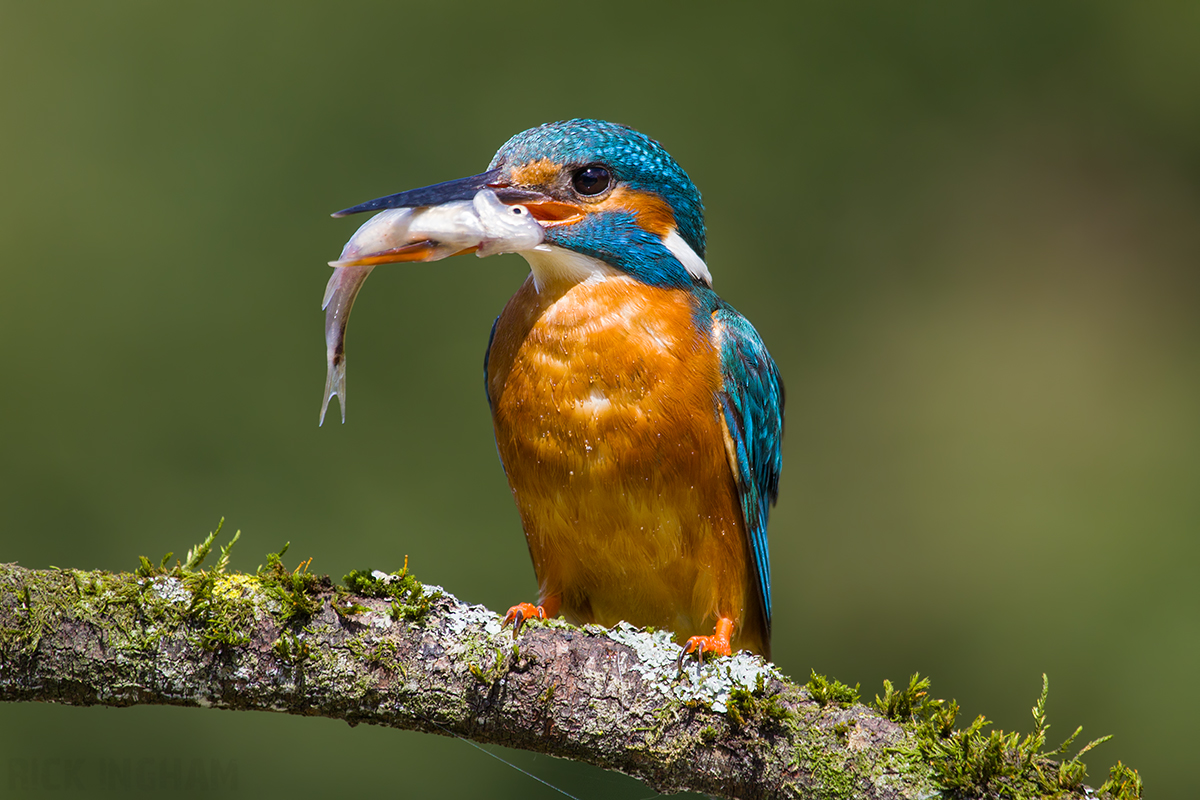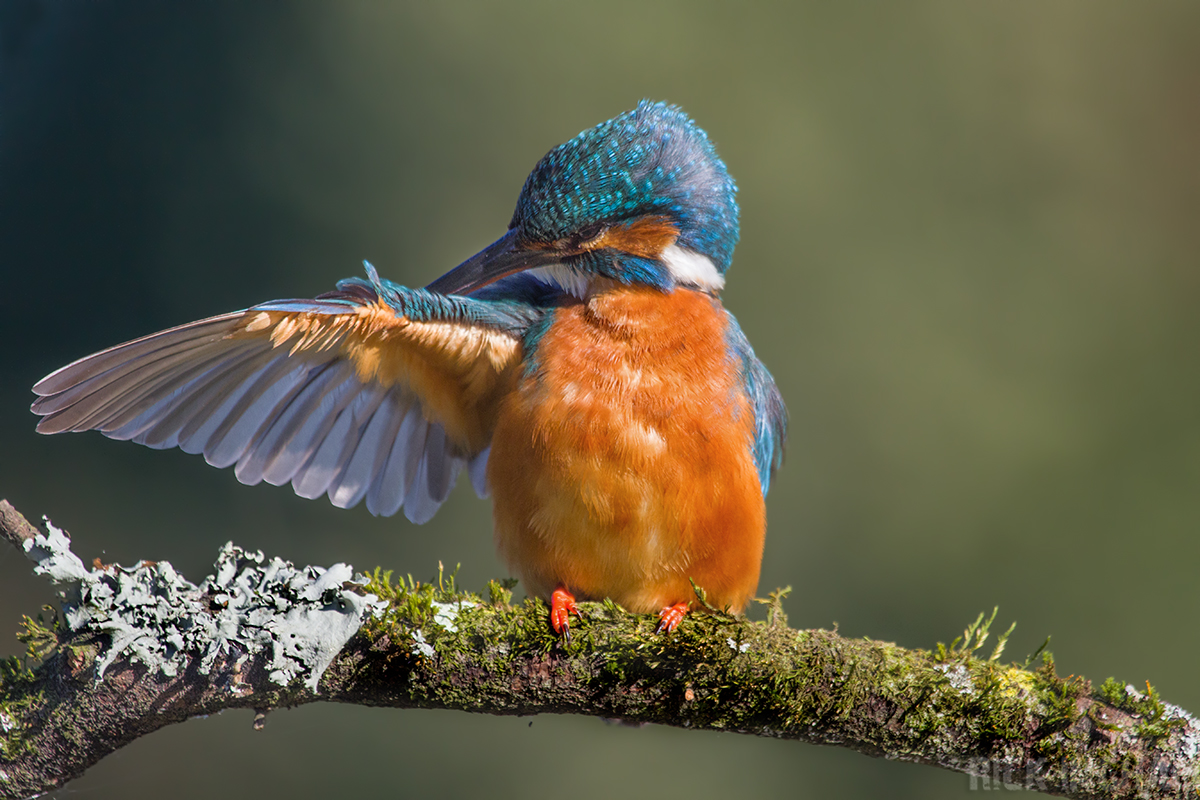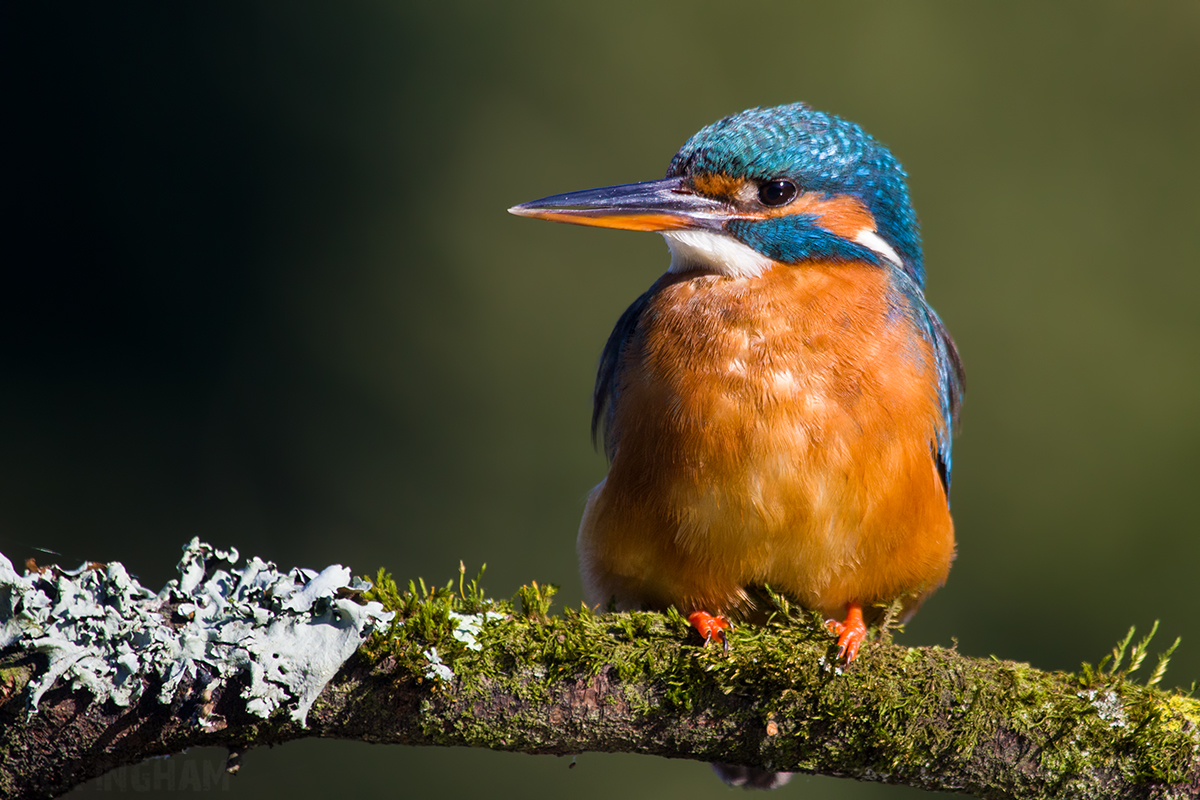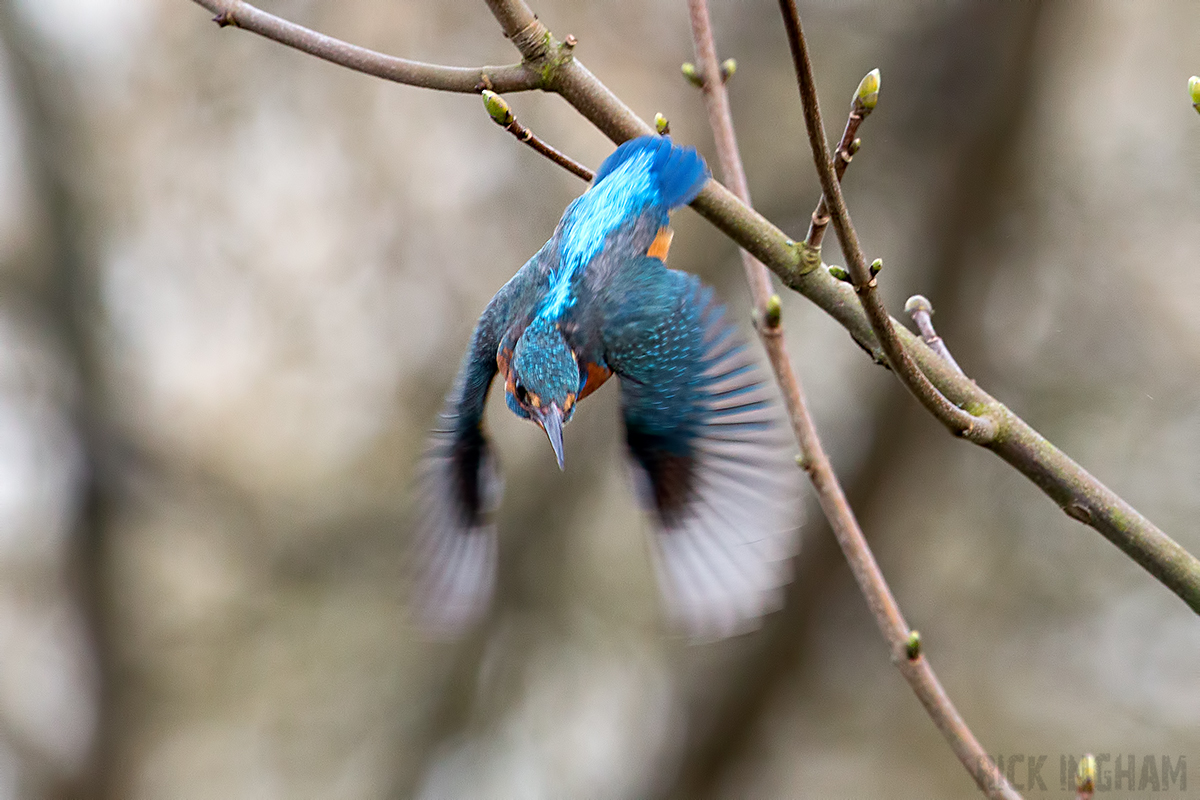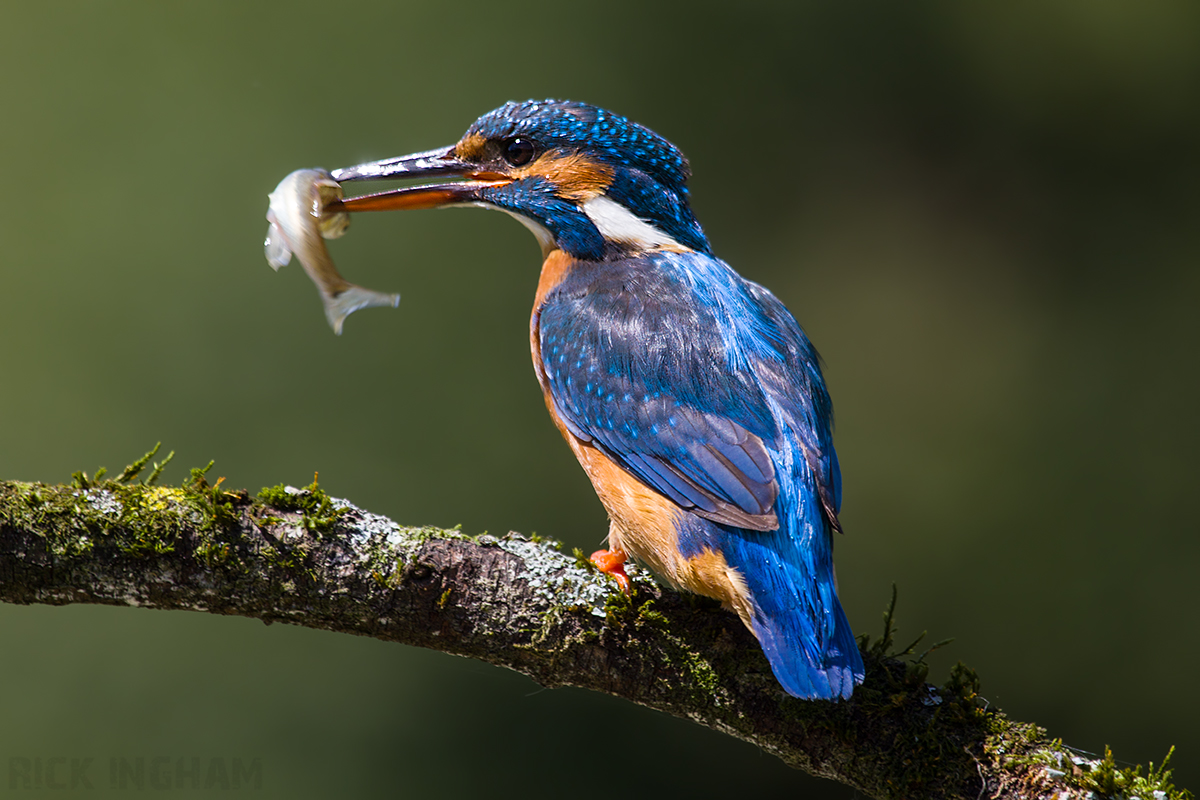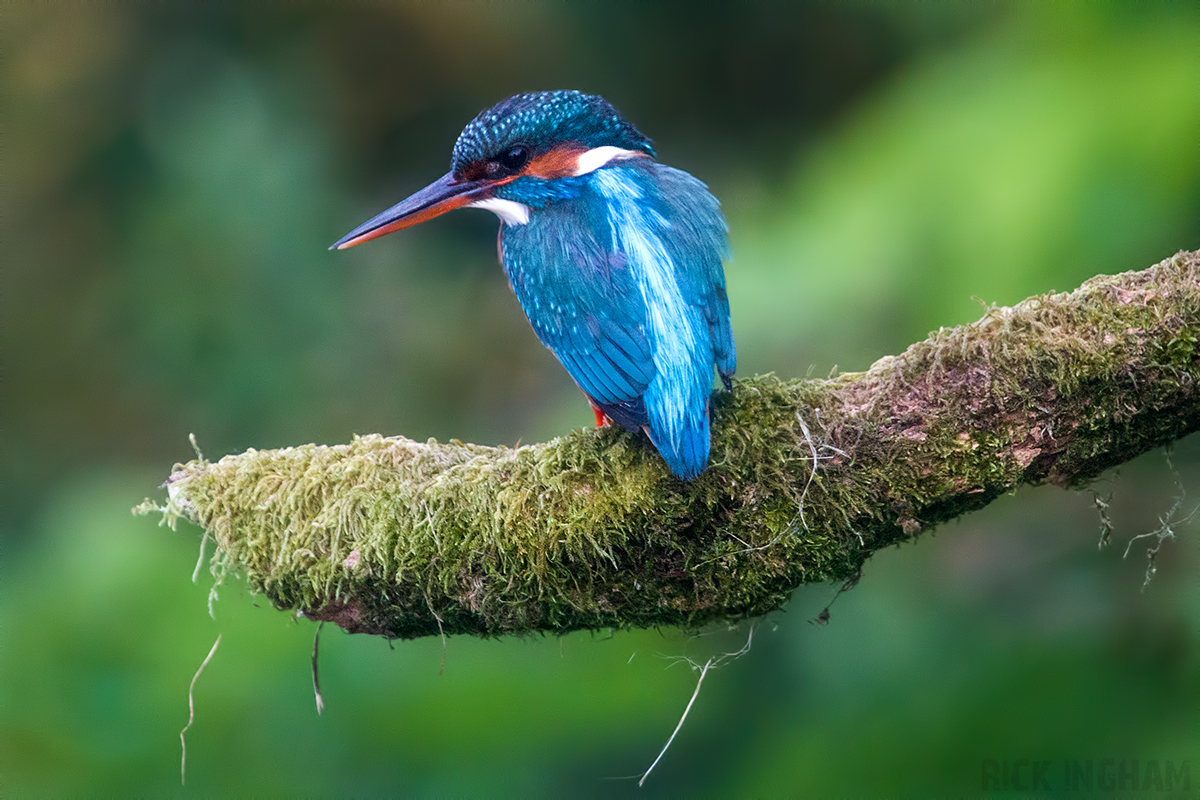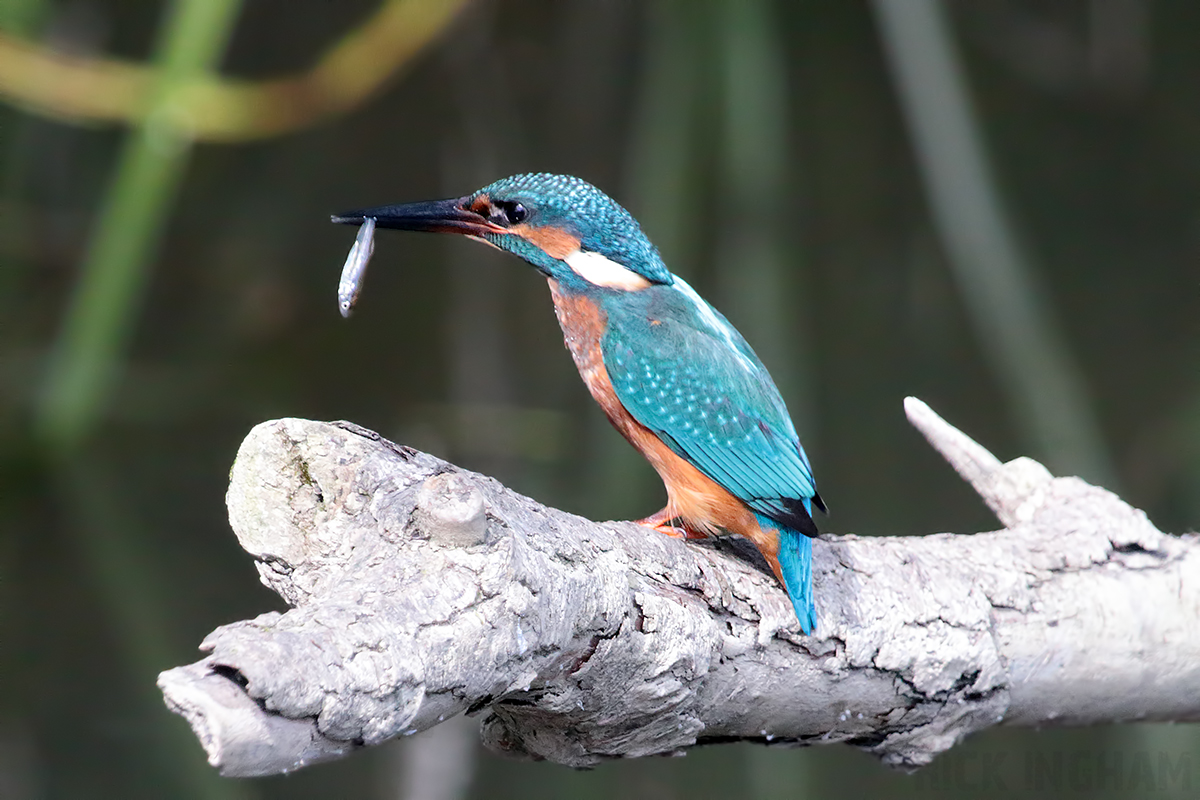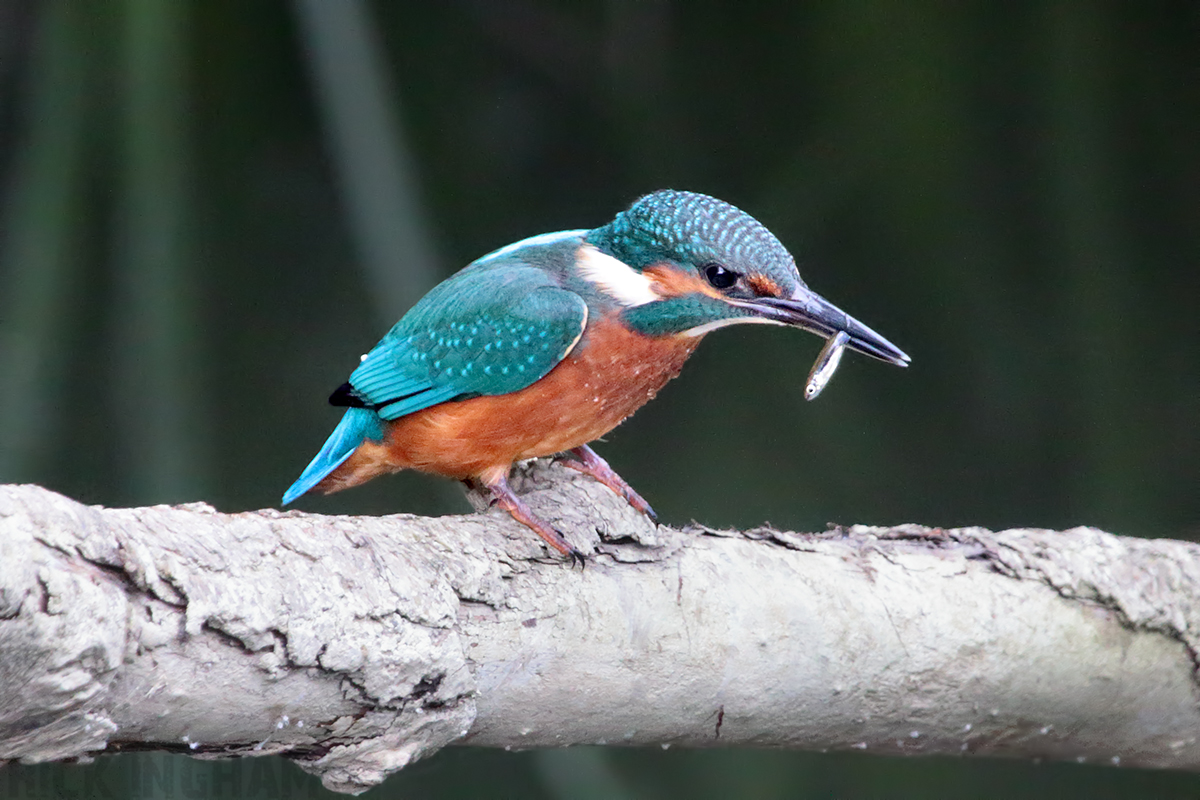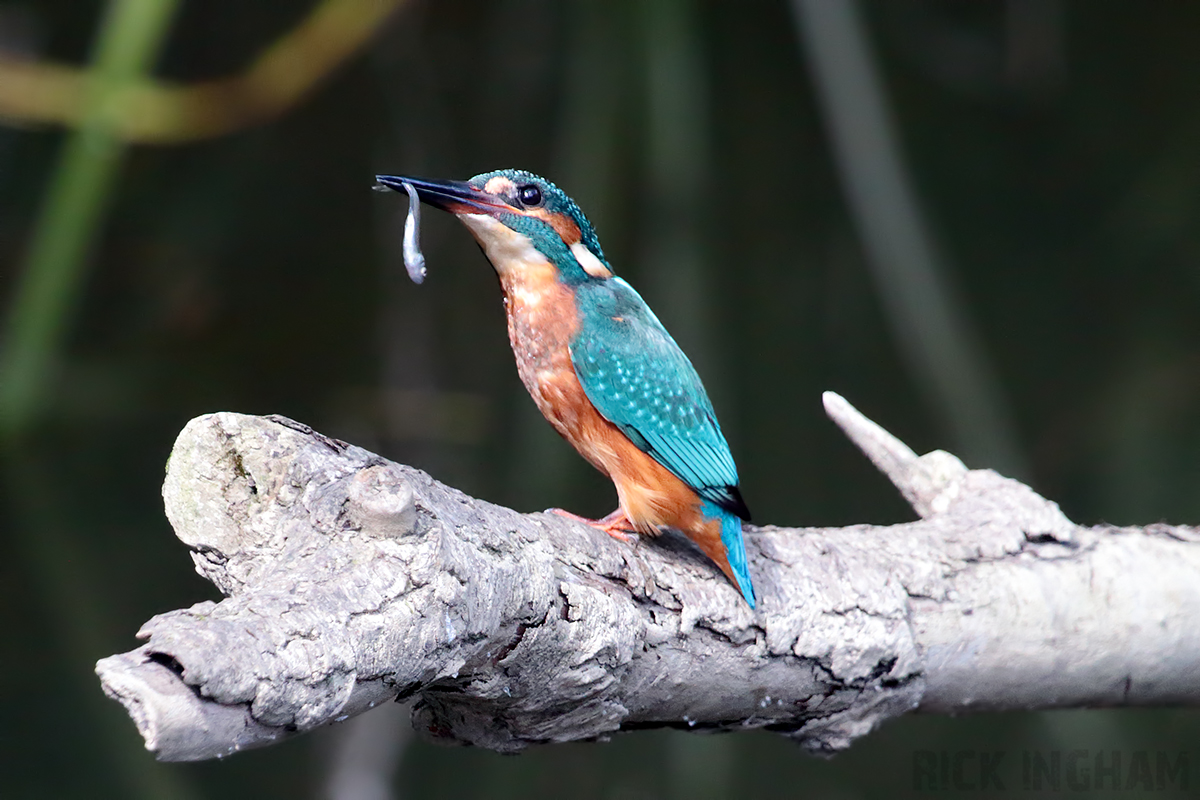Despite being a household name, few people have ever been lucky enough to see a Kingfisher.
These shy, enigmatic birds live an inconspicuous life almost certainly along your local river, canal or lake, usually remain unseen by flying very fast just a few inches from the waters surface.
There are more than 90 species of Kingfisher across the world, however the UK only has 1 breed, the Common Kingfisher. Standing only 15-17cm tall, they’re very easy to miss, which only adds to the mysteriousness of the bird. Kingfishers live around 7 years though only a quarter of the years fledglings actually make it to the first breeding season. They live a tough life battling weather, predators and human interference.
Absolutely fascinated by these birds, I could only dream of catching a quick glimpse of one. I spent a crazy amount of my spare time out walking along my local waterways trying to find one – with no luck.
Information on the internet wasn’t that helpful, quite often contradicting each other. So I’ve decided to put together this report, writing about everything I know about the Kingfisher and how to find them. The most important thing before finding them is you must understand how they live and operate or you will not see anything.
Territories
Kingfishers are extremely territorial birds, each fiercely defending their patch of the river from others.
It is essential their territory is defended to secure a good food source and stop other Kingfishers eating the fish around the Winter period when fish numbers are down and water levels rise or even freeze over. Quite often a patch is so bad during the winter they are forced to go and find somewhere better…usually into another Kingfisher’s patch. When these birds fight, they are usually willing to fight until death to defend their stretch.
Territories are usually between 1 – 3 miles long depending on how good the fishing spots are and are populated the surround area is of the same type, defending their area. My local Kingfisher territory in Chippenham is only 1 mile long due to very good fishing opportunities. However the next territory up at Christian Malford, there is very little decent fishing areas and as such I have spotted the bird 3 miles away on the other side of Seagry!
When the need arises, Kingfishers aren’t scared to include other water areas such as garden ponds, reservoirs and lakes in their patch.
Fishing
The best chance of a good source of fish are stretches of shallow, clear water – quite often at bends in the river where water slows. Muddy or polluted waters will not contain any fish so Kingfishers won’t be found either.
At these shallows, good perches are also essential to successful fishing. Whilst Bulrush heads are often used, they’re swaying in the wind doesn’t make targeting a fish easy. Also, when a Kingfisher catches a fish, it needs to violently strike the fish against a solid branch so it can be swallowed easier. An ideal perch will be around 2 metres above the surface of the water. The bird firstly lands on the perch and looks round ensuring it’s a safe place to concentrate on the fish rather than predators. It then looks into the shallow water to find a fish, watching it’s movment, it’s size and appearance.
It will then bob it’s head to get a clear understanding of the depth of the fish in the water. If the Kingfisher dives in too fast it may hit the bottom and injure it’s self. Too slow and it will scare the fish away when it hits the water. The design of a kingfisher’s beak is aerodynamically efficient, much like a dart, allowing it to dive from its perch towards its prey with maximum speed and barely any splash. The front of Japanese bullet trains have were designed having taken inspiration from their beaks.
When it has worked out the diving distance and height it will lean off the perch and make it’s self aerodynamically streamline, looking as sleak as a dart. Whilst in flight it’s third eyelid will cover the eyes, rendering the Kingfisher blind until it’s out of the water. Once out, it will quite often return to the same perch unless there is a nearer, easier to reach one. As mentioned above, the Kingfisher will repeatedly strike the fish against the solid perch, either killing it or stunning it long enough to be manouvered so the head is swallowed first. This is due to the Stickleback’s spikey spine that will injure the bird internally if swallowed against the direction of the spikes.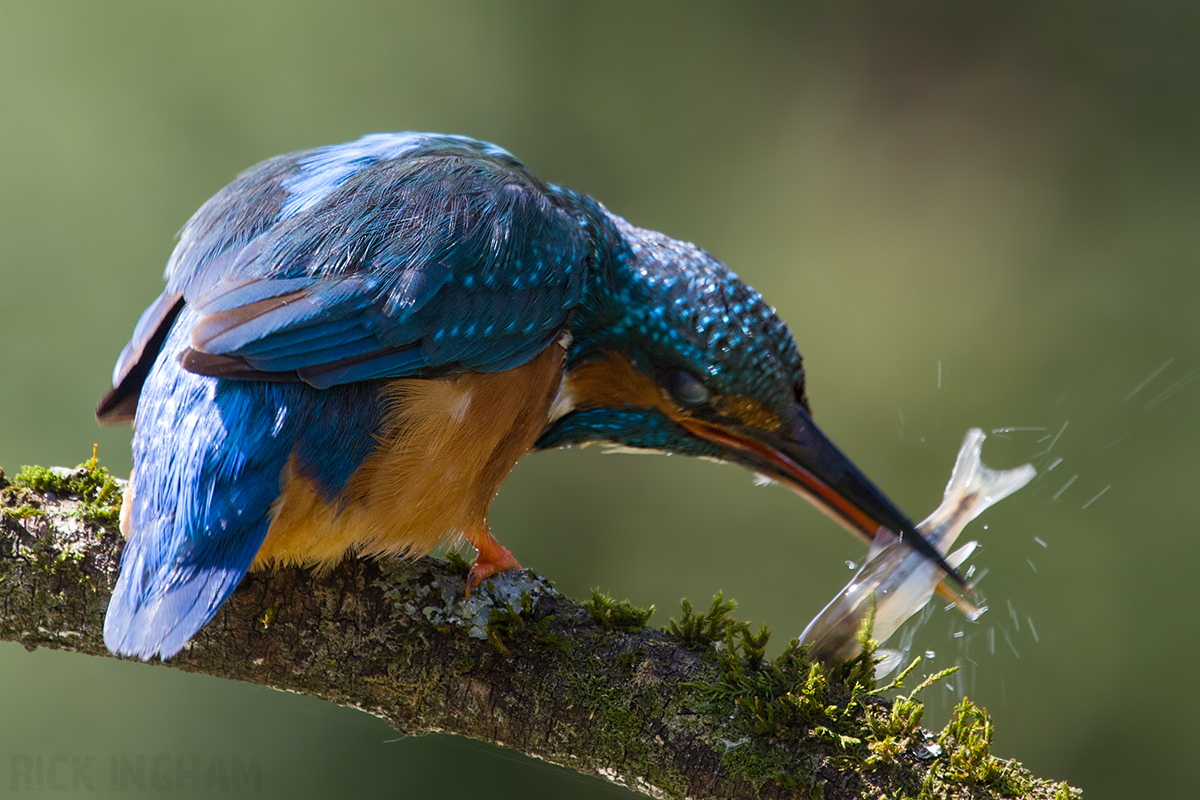
A Kingfisher needs to eat atleast it’s own body weight in fish each day which on average works out at around 15 to 16 Minnows. Usually the majority of fishing occurs from first light and then eases off leading up to Midday and then resumes again early evening. The fish bones accumulate inside the body into a ball of bones and is ejected out of the mouth.
The majority of fish consumed tends to be Minnows and Sticklebacks though the Kingfisher will eat whatever it has to. Eels, Crustaceans, insects and even seeds or berries.
Breeding
Unusually, Kingfishers will breed in their first year. A search for a mate will begin in February, ideally pairing with the bird next door allowing territories to merge. The male will bring the female fish in an attempt to attract her, at first constantly getting ignored and rejected. After various breeding attempts throughout February, the female will finally accept the male and they will then find a suitable bank to start excavating the nest for the first brood.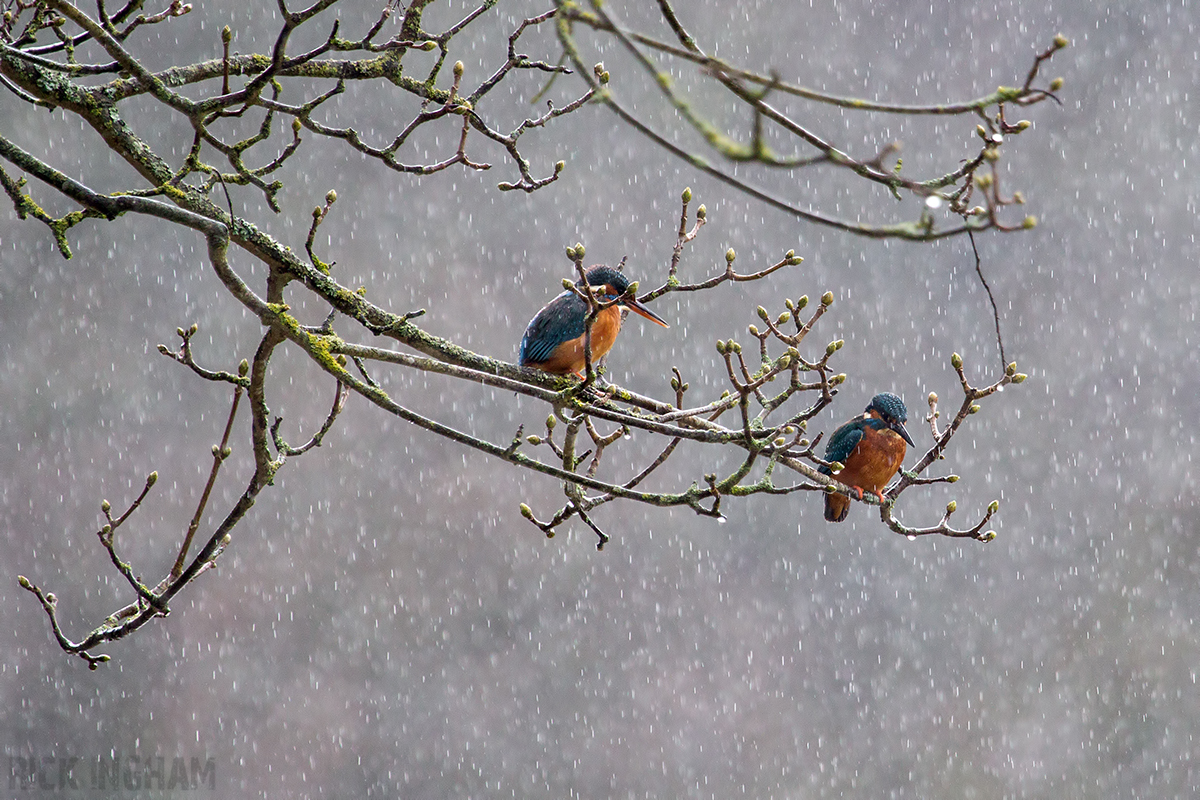
The perfect bank will be tall, steep, vegetation free and loose soil that can be dug out with ease. The nest will be dug a couple feet from the top to prevent any predators such as Mink, Otters and domestic cats from reaching the birds inside. The tunnel dug out will be at most 1 metre long and only just as wide as the bird itself. Once the nest is finished, the first clutch of 6 or 7 eggs will be laid at the end of March or early April. Either the female will stay in the nest incubating the eggs during this period with the Male bringing her fish, or they will take it in turns and swap every 2 hours.
The eggs will then hatch between 19 and 21 days later. When the first egg hatches, they will then need to feed each chick at least 1 fish every 15 minutes. When a chick is fed it then moves to the back of the nest and join the back of the queue waiting for it’s next feed.
If for example the female is still incubating the last few eggs, the male will need to fish for itself and the female which will be at least 32 fish in total, but then he will need to feed each chick 2 fish an hour - meaning over 120 fish to catch non-stop from dawn to dusk. From personal experience, I find that when bigger fish are caught, they will eat less. In Devizes the male was catching fish so big for the chicks that 1 fish was all they needed the whole day.
When the chicks are 24 to 25 days old, they will finally leave the nest. When they do, they're the same size as their parents - so how is it possible to tell a juvenile from an adult?
The most noteble difference is the dull colouring to the feathers, the bright orange is instead a brown colour and the blue is more turquoise. Another obvious difference is the adult Kingfisher's feet are bright red where as juveniles are black.
Rather confusingly, it's a little harder to distinguish a female from a male when they are young. Adult females lower half of the beak is a bright orange (as pictured below) where as the male is completely black. All juveniles have black beaks and it's only when they start to become adults the beaks start to colour. The last difference is their personalities. Adults are very shy, paranoid birds and very sharp at fishing. The juveniles however, don't mind people as much and are perhaps not so aware of danger around them. They also miss more fish than they catch!
 |
 |
| Juvenile | Adult |
As soon as they leave the next they will be shown how to fish and after a day or two will need to feed themselves. After 5 days, they will be aggressively driven out of the territory to find their own patch. Given how heavily populated our waterways with Kingfishers, they may have to travel some distance. Only half of the brood usually make it through the first few months of independence.
By this time the pair are already mating for their next brood and digging a new nest. Kingfishers can produce up to 3 broods and up to 6 chicks if all successfully make it meaning the population can be replaced very quickly if a hard winter kills the birds off. Once breeding season is over, the pair will go their own ways – possibly to pair up again next season or possibly find another individual. During the winter the nests created over the year may flood and/or collapse or be demolished by farm machinery draining land or grading banks.
Kingfisher Deaths
Kingfishers are a protected species under the Wildlife and Countryside Act 1981 Schedule 1 and you need a permit to go anywhere near a nest during breeding season. The birds are extremely shy and will avoid an area completely if frightened. If this is the nest area then the chicks will not get fed. When they are hungry and weak they will stop calling for food and when the adults return to the nest they will think their checks are not hungry and will not feed them, unfortunately causing them to die. It’s easy to see your local river as a recreational area, but it’s important to remember that you are in a Kingfisher’s territory and you are invading it’s safe space causing a great deal of distress.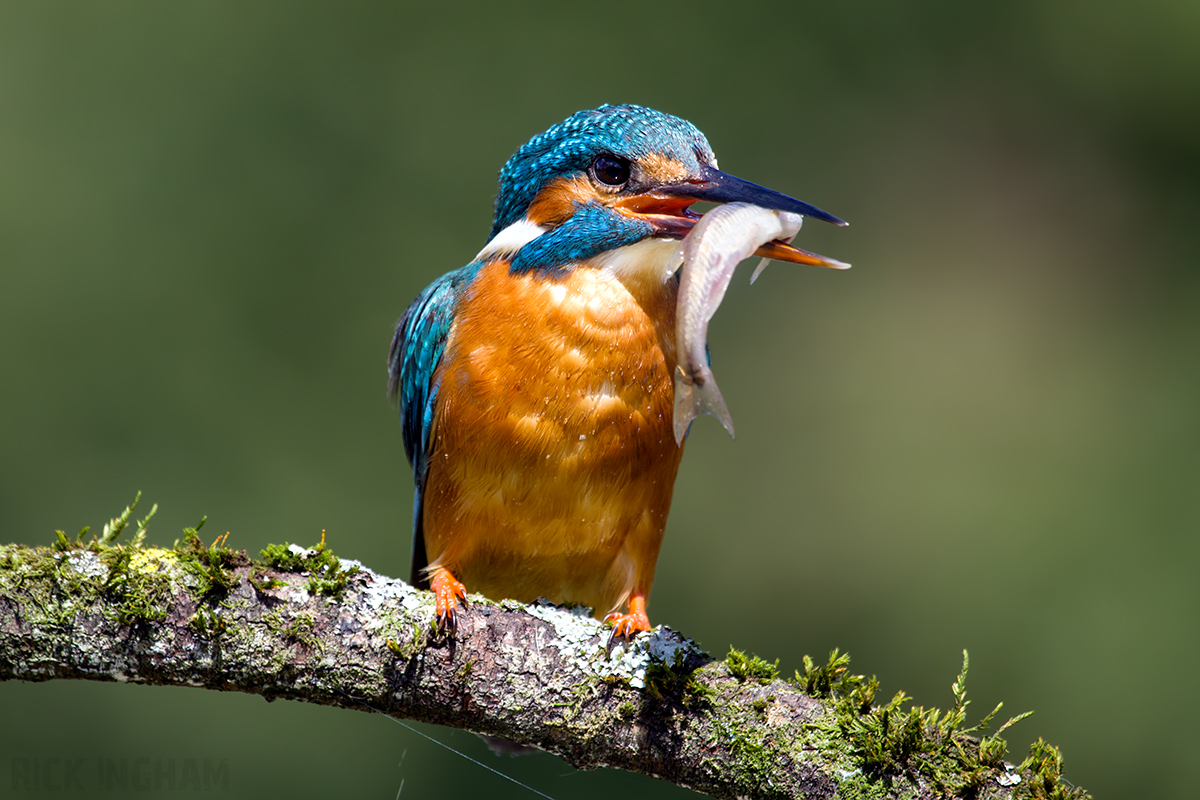
Sadly this isn’t the only example of human influence affecting the Kingfisher. Cutting down bushes and hedges along rivers and canals take away valuable perches to fish and dog walkers and children can scare a bird away from a very precious fishing area. Other human factors in deaths include fishing wire caught on branches, collisions with road traffic and building windows. Because Kingfishers are at the top of the food-chain, they are extremely vulnerable to chemicals and industrial waste consumed by prey.
Also, semi-related to human influence, the Mink was brought to the UK from America in the 1920’s and is considered an invasive species. The Mink will eat anything it can along the river and will be determined to climb into a Kingfisher’s nest to eat both the eggs and birds. Whilst Otters, Stoats, Rats and Sparrow Hawks are also a threat, the main predator of the Kingfisher is actually the domestic cat
.
If human influence and a wide range of predators wasn’t enough, the main cause of Kingfisher deaths is actually the weather. During the winter, not only can the birds die from the cold, but the water can freeze meaning fishing is impossible. The only way to find food is to fish at another bird’s fishing spot which will lead to a dangerous scrap or there may not even by anywhere to get food. Rising water at the start of the breeding season may also submerge nests, ruining any chance of producing fledglings. The water can also become very muddy and opaque during bad weather meaning no fish can be spotted.
Neon Blue
When a Kingfisher is seen flashing past at a river, the most notable part of the bird is the bright neon blue feathers on the back. Not so long ago Kingfishers were hunted for these feathers for fishing flies and also for use in fashion.
The orange bellies are due to pigments which is why juveniles’ bellies appear dull to begin with and develop as they grow older. Their ‘semi-iridescent’ blue feathers however, are not created this way, but are structurally created. Each feather is delicately angled, positioned and of the correct thickness to build up the bright colour. If you viewed an individual feather it would barely be blue at all. This is responsible for the colour changing in different light, and quite often appears turquoise in low sunlight.
Mythology
Most people aren’t aware the Kingfisher has a place in Greek mythology. Halcyon is another name for the Kingfisher and the story behind it is an interesting one. The Greek goddess named Halcyon was the daughter of Aeolus, who was the ruler of the winds. Aeolus lived in the caves, where winds were imprisoned. He was responsible for releasing the winds when the higher Gods instructed him to do so. Halcyon was married to the mortal king Ceyx of Tachis. Ceyx had to go to the town of Delphi to consult the oracle of Apollo and chose to sail there despite Halcyon, who was very afraid of the sea, begging him not to go. Unfortunately Halcyon was right and Ceyx drowned during a huge storm just off the coast. When it dawned on Ceyx that he was going to drown, he asked the God of the sea, Poseidon, to take his body to his wife’s arms. Before Halcyon has learned of her husband’s death, she asked Hera (The Queen of Greek Gods) to ensure his safe trip. But sadly it was too late and Hera had no choice but to request Hypnos (The God of sleep), who instructed Morpheus (The God of Dreams) to appear in Halcyon’s dreams and inform her of her husband’s death. Halcyon went to the coast where she found Ceyx’s body and threw herself into the waves.
Amazed by her devotion and love, the Gods decided to save her and to transform her into a seabird...The Kingfisher. They also turned Ceyx into another kingfisher so the two could live and be together.
Zeus (King of the Gods) ordered that Halcyon would lay her eggs only in winter. Having her nest near the shore, close by the spot where she found the body of Ceyx. The same stormy waves that claimed Ceyx however, constantly washed away Halcyon’s eggs. Her weeping and praying eventually caught Zeus’s attention who felt sorry for her and as well being encouraged by the other Gods, he decided to give her 14 days of good, calm weather in the middle of winter.
The two Kingfishers were able to keep their eggs safe every winter during the period that came seven days before and seven days after winter solstice. During these days Halcyon’s father would keep the winds calm on the sea. These days were named the Halcyon Days. Today, Halcyon days are still celebrated in Greece during January, in memory of Halcyon and her sacrifice.
Shakespeare also mentioned the Halcyon bird, firstly in ‘Henry VI’ Part I: 1592:
“Assign'd am I to be the English scourge.
This night the siege assuredly I'll raise:
Expect Saint Martin's summer, halcyon days,
Since I have entered into these wars.”
The kingfisher also used to be known to have an influence on the weather. In medieval times it was thought that if the dried carcass of a kingfisher was hung up it would always point its beak in the direction of the wind. This was also referred to by Shakespeare in ‘King Lear’, 1605:
“Bring oil to fire, snow to their colder moods;
Renege, affirm, and turn their halcyon beaks
With every gale and vary of their masters”
The meaning of the phrase ‘Halycyon Days’ seems to have been lost as time has gone on, originally referring to the calm days in the winter but nowadays it’s used when recalling the seemingly endless sunny days of youth.
How to find a Kingfisher
So you’ve learnt about how they fish, breed and live their life. Now it’s time to go and find one. Take a look at a good local river on Google Earth or maps looking for good ‘S’ bends where the water will slow or if there is a weir where the water is still on one side. This is likely to be a good bet to find them. Kingfishers are a creature of habit, they have their favourite fishing spots, their favourite perches and their favourite routes to fly. The key is to walk near these good spots on your river and listen for the unmistakeable high note of the Kingfisher. The sound can be heard on Youtube. They usually call most of the time they’re flying so you can hear them coming about 5 seconds before they appear.
Its then important to watch where it lands…that will be one of it’s favourite perches. Maybe not THE favourite perch but it’s a good starting point. You then follow at a distance in the direction it went until you can observe it diving into the water for a fish. You’re then within a good chance of it returning to this location. Remember shallow, clear, slow running water is the best fishing location. It’s always best to find a fishing spot as it will spend most of it’s time there hunting and preening it’s self to remove the water drops from the feathers after fishing. They will quickly fly away from the nest to not attract predators to the area so lingering around the nest isn’t the best idea to view them, not least because the nest is protected by Schedule 1.
When you have a bird in front of you, you will need to be very still. They don’t like the reflective human skin and lifting your camera will scare them off.
A tripod is essential and a decent seat or stool – anything to prevent movement when they show up. Also a pop up hide or a screen would be good. I also personally wear gloves, a hat and a ski mask just to hide as much skin as possible.
It is however, much more comfortable and easier to visit your local nature reserve that has a bird hide next to a lake with perches. When visiting during the breeding season you may see up to 5 or 6 Kingfishers in a day.
Kingfishers love a new perch and will give it a try just to see if it's worth fishing from...so you're pretty much guaranteed to get a visit when you place a decent perch on your local waterway...the catch is, it could take minutes, hours or days! The key is patience. If you place the perch in a position mentioned earlier, with shallow clear water with plenty of fish, you will get a visit sooner. I also find it important to pick your bird carefully...the Kingfishers situated in a busy town or park tolerate humans and new things in their territory much better. The birds that live in the countryside with nobody around are completely paranoid and will avoid a whole stretch of river just at the sight of a new perch.
The key points are to pick a decent Kingfisher, blend in well, keep still, pick your spot and wait.... Good luck!


